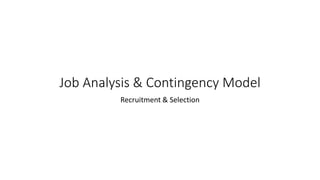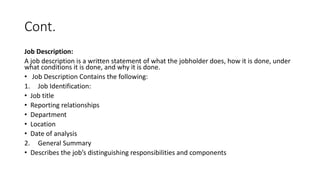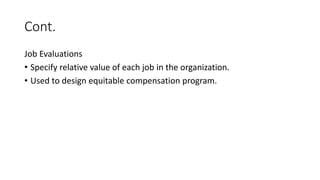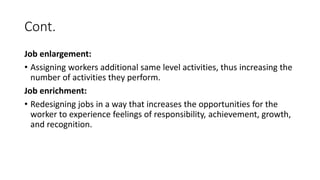The document discusses job analysis and its purposes. It describes the key aspects of job analysis including defining job duties and requirements, generating job descriptions, specifications, and evaluations. It outlines the job analysis process and methods for collecting information like observation, interviews, questionnaires, and diaries. The stages of job analysis are also summarized, including understanding the purpose, benchmarking positions, collecting data, seeking clarification, drafting descriptions, and supervisor review.



































